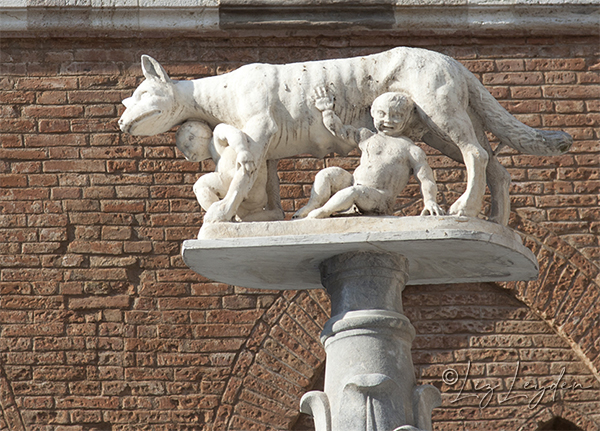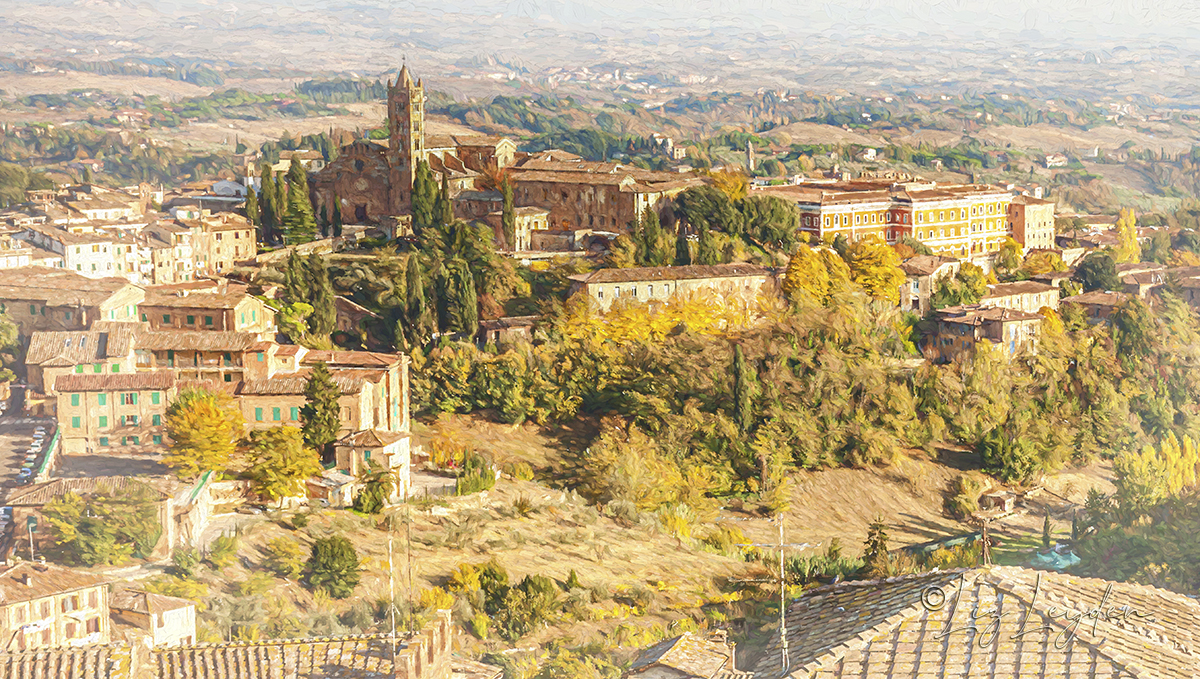An elevated view of part of the pretty little medieval city of Siena, Italy, looking towards the Romanesque style Basilica Santa Maria dei Servi, a church which was first built in the 13th century then extensively restructured until the early 16th century.
Siena is a hill town in Tuscany, established by the Etruscans from about 900BC – 400BC, and inhabited by the Saina tribe. Later, a Roman town, Saena Julia, was established by the Romans.

A popular legend is that the city was formed by Senius and Aschius, sons of Remus, who fled Rome after the murder of their father by his brother Romulus, taking the statue of the she-wolf suckling Romulus and Remus with them. That statue is now the symbol of the city of Siena.
Siena rose to power after their invasion by the Lombards in the Dark Ages. The Lombards made Siena the centre of their operations in northern Italy.
The Golden Age of the Republic of Siena was from the 12th century until 1555, when it succumbed to the Duchy of Florence which was in alliance with Spain. Most of the beautiful architecture, including the Duomo and the Piazza del Campo, which today attracts many tourists from around the world, was built during the Golden Age.
Both images are copyright © Liz Leyden, all rights reserved.
This image of Siena is for sale as wall art or as various home or personal accessories at Pixels.com.
My original photo of an overview of Siena is available to purchase as a stock photo from iStock.
My photo of the statue of the she-wolf with Romulus and Remus, in a wider context, is also available as a stock photo from iStock.


